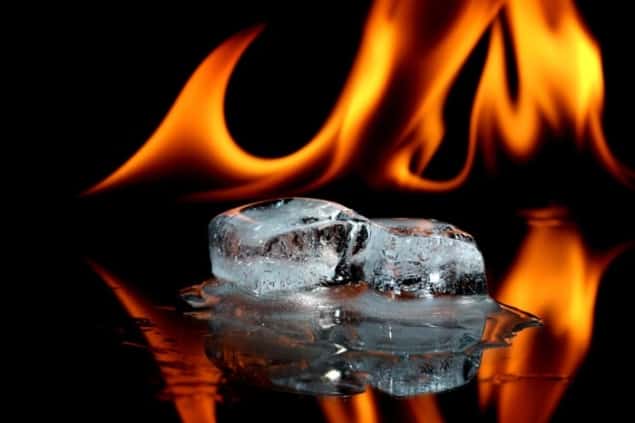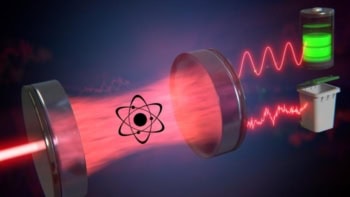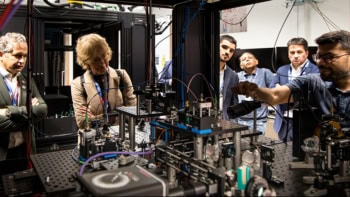
A quantum system can be cooled with a blast of hot incoherent light. That’s the surprising conclusion of theoretical physicists in Germany who have shown that the rate of cooling can sometimes be increased by putting a system in contact with a hot entity. The scheme – which has not been tested in the lab – could offer a simple way of cooling quantum devices.
Since the 1980s physicists have been cooling gases of atoms using coherent laser light. This method works by having atoms absorbing and emitting photons such that the atoms gradually loose momentum. This technique only works if the light is coherent – if it isn’t coherent the light simply heats up the gas.
But now Jens Eisert and Andrea Mari of the Freie Universitaet Berlin have come up with a way of using incoherent light to cool a quantum system. Their system is a mechanical quantum oscillator that is coupled to two optical modes – however Eisert stresses that it can be applied to a wide range of three mode quantum systems.
Hot and cold modes
The process begins with the mechanical oscillator in a high-energy or hot state. One of the optical modes is cold, which means that energy can potentially flow from the oscillator to the cold mode – cooling the oscillator.
The second optical mode is hot, meaning that it contains a large number of incoherent photons and is subject to thermal fluctuations. According to Eisert and Mari’s calculations, this hot mode has two effects on the temperature of the mechanical oscillator. One effect is obvious; the hot mode heats the oscillator. The second unexpected effect is that fluctuations in the hot mode increase the rate at which energy is transferred from the oscillator to the cold mode. The key to a practical application of the technique is to ensure that the latter effect is dominant.
Eisert says that the system is similar to a transistor, whereby the application of heat at the hot optical mode results in a proportional increase in the flow of heat from the mechanical oscillator to the cold mode.
According to Eisert several experimental groups are now working on realizing the system in the lab. Possible applications of the effect include cooling quantum devices such as atomic clocks or tiny mechanical resonators using incoherent light from relatively inexpensive LEDs.
The calculations are described in arXiv: 1104.0260



